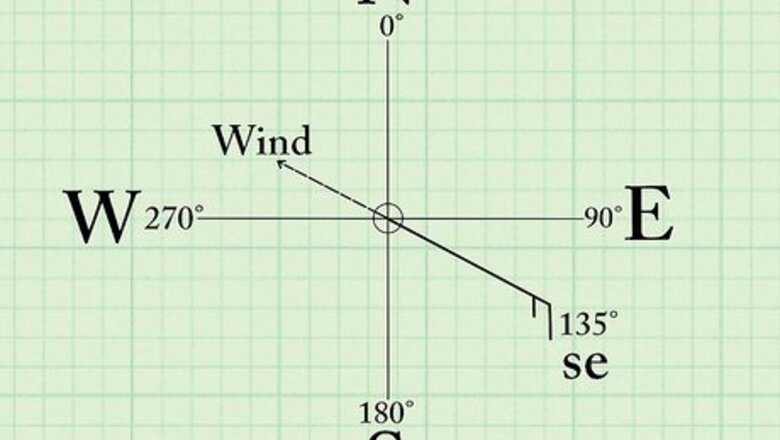
views
Reading the Barbs
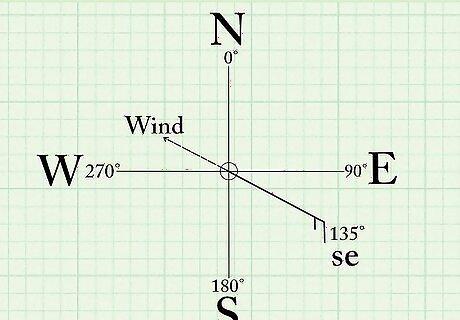
Read the wind direction. The "flagpole" or directional vector of a wind barb shows you which way the wind is blowing. Make sure that north is oriented up. Just like a map or a compass rose, a wind barb plot is typically drawn with north at 0° and south at 180°. You can learn the direction of the wind by reading the angle of the barb vector in degrees. The dotted end of a wind barb staff shows where the wind is going, while the top or "feathered" end shows where the wind is coming from. A wind barb vector that points to 135°, in the bottom-right quadrant of the plot (as illustrated above), indicates that the wind is blowing from the southeast. A wind barb vector at 270°, with the barbed end to the left of the graph at a right angle to north, is blowing from due west.
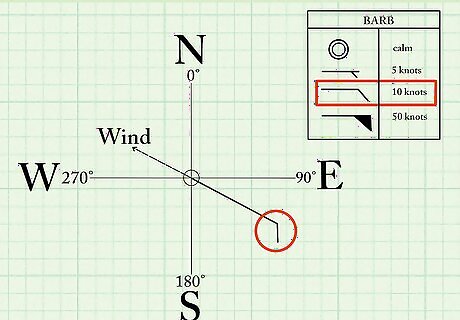
Gauge wind speed. You can tell how hard the wind is blowing by looking at the "barb," line, or symbol at the end of each wind direction vector. Wind barbs use a kind of tallying system, and each distinct shape/line length denotes a different speed. A small, open circle indicates that the winds are calm. This usually means that the wind speed is less than 1.74 knots (2 mph). A single short line (half line) or "feather" represents 5 knots (5.75 mph) of wind speed. A single long line (full line) or "feather" represents 10 knots (11.50 mph). A fully blackened triangle, "pennant," or "flag" on the barb represents 50 knots (57.50 mph) of wind speed.
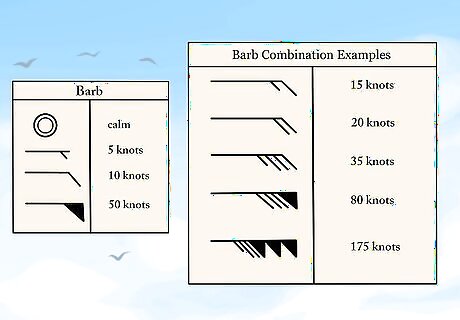
Read barb combinations. If the wind speed is anything other than 5 knots (5.75 mph), 10 knots (11.50 mph), 15 knots (17.26 mph), 20 knots (23.02 mph), or 50 knots (57.50 mph), then you will need to read the speed from a combination of symbols. The symbols should begin with the highest relevant barb, at the end of the wind vector. Thus: if the wind speed is greater than 50 knots (57.50 mph), then the tally will begin with a black triangle. If it is less than 50 knots (57.50 mph), then the tally will begin with a line. Two full lines in parallel would represent 20 knots (23.02 mph) of wind speed. One full line and one half line would represent 15 knots (17.26 mph). Three full lines and one half line would represent 35 knots (40.28 mph). One black triangle and three full lines would represent 80 knots (92.06 mph) of wind speed. Three black triangles, two full lines, and one half line would represent 175 knots (201.39 mph).
Understanding Weather Patterns
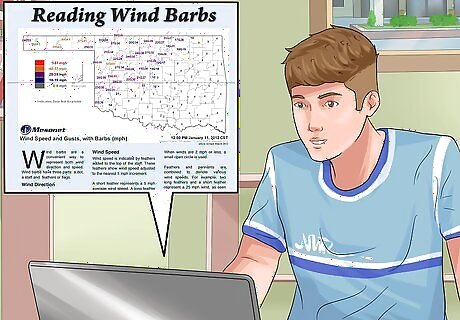
Find wind barbs for your area. Run a web search for "wind barbs [your area]" or visit the website for a local weather station. Read the wind direction that the wind barbs show. The direction of the main line of the wind barbs shows you the direction from which the wind is coming. Remember: the top or "feathered" end of the wind barb staff shows where the wind is coming from while the dotted end of a wind barb staff shows where the wind is going.
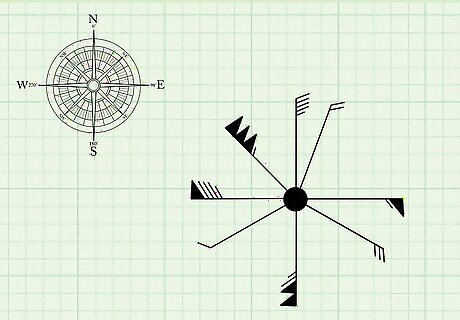
Overlay wind barbs onto a compass or another orientating guide. In order to interpret wind direction, you will need to know which way is north. Wind barbs are usually provided within a directional context – but if not, make sure you orient them with north at the top.
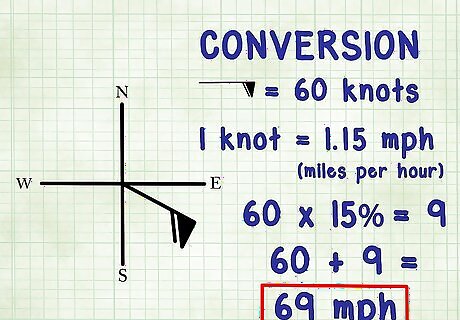
Convert wind speed from knots. Wind barbs almost always display wind speed in terms of knots. However, it may come in handy to know the wind speed in another unit of velocity. One knot is equal to 1.15 miles per hour (mph) and 1.9 kilometers per hour (kph). In order to calculate miles per hour, simply add 15% to the value in knots. 60 knots to mph: 15% of 60 is 9. 60+9 = 69 . Thus, 60 knots is equivalent to 69 mph.
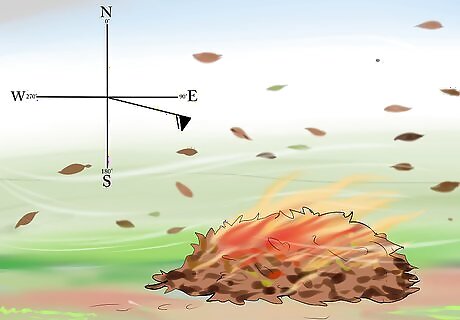
Use wind barbs to evaluate wind safety. When you know how fast the wind is going, you can apply the measurement to various safety measures. Notably, this includes burn bans and other effective fire prevention strategies. Wind barbs can also be helpful to mariners navigating the seas.




















Comments
0 comment